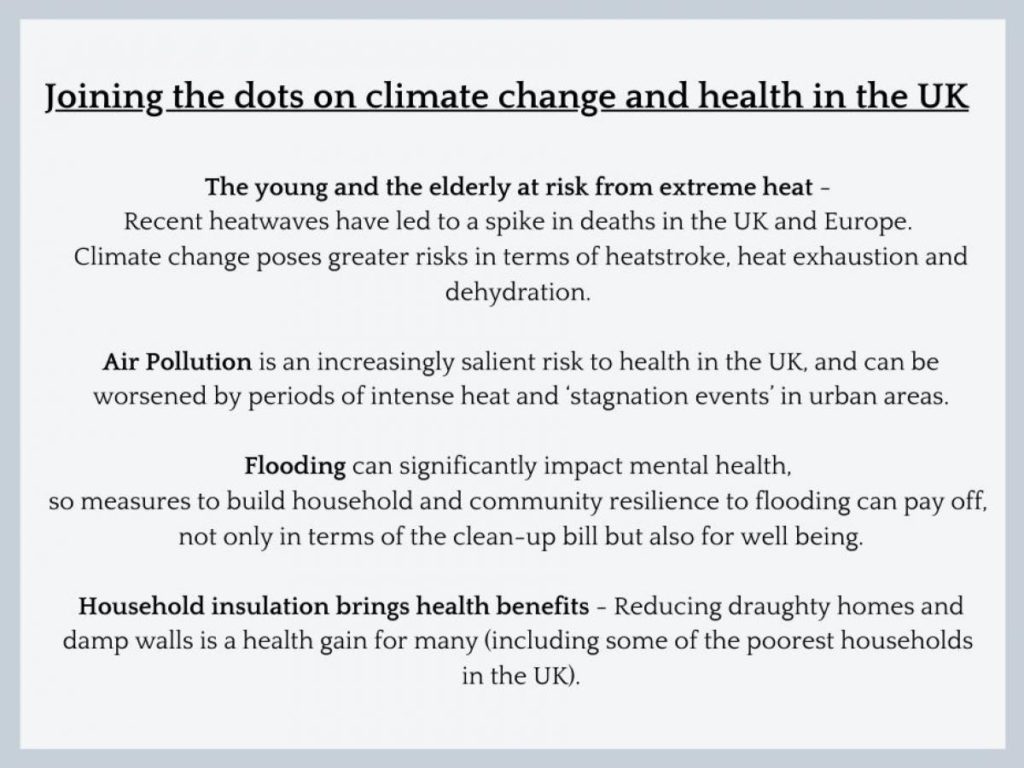You might like
More resources from our
Visuals & media programme
Air pollution imagery can communicate the health impacts of climate change powerfully – read this web report to find out more.
Executive summary
New survey research – the first of its kind – reveals how the UK public engages with imagery communicating the health impacts of climate change (and the health benefits of low carbon measures).
Images showing air pollution (compared to images of floods, heat stress, and infectious disease) were found to be more effective for visually communicating the health impacts of climate change: the health consequences of climate impacts other than air pollution are not yet visually salient in the public mind.
While it is crucial to help audiences join the dots between the range of climate impacts and public health – from flooding to heat stress – this survey suggests that information and imagery focusing on air quality could be particularly engaging for UK audiences at present.
Visual communication on the health impacts of climate change should therefore:
- build on the salience of air pollution as an issue with links to climate change to create a visual narrative of climate impacts that is people-focused and relatable and which introduces the link between health and other climate impacts.
- be clear about the ways in which air quality can be linked to climate change, for example when rising summer temperatures create air pollution hotspots in urban centres.
- lead with images that are likely to convey people’s vulnerability and susceptibility to the health risks of air pollution/climate change.
- combine these health-impact images with solutions-focused photos that build a sense of ‘efficacy’, and highlight positive social norms (around people taking relevant climate actions).


